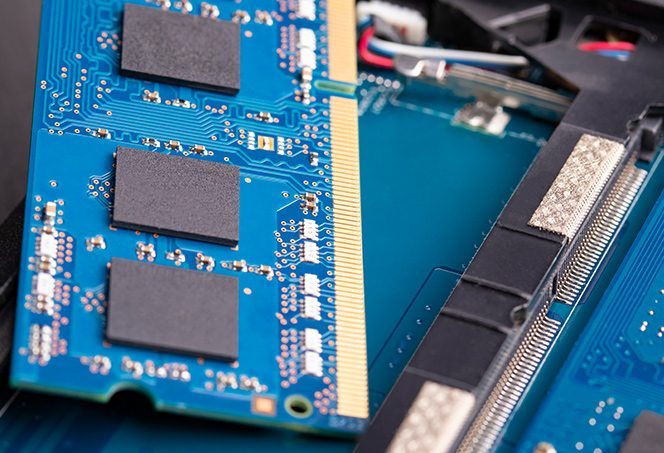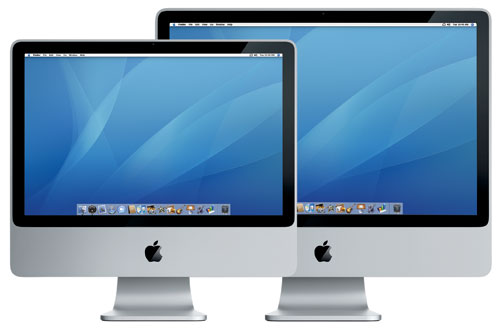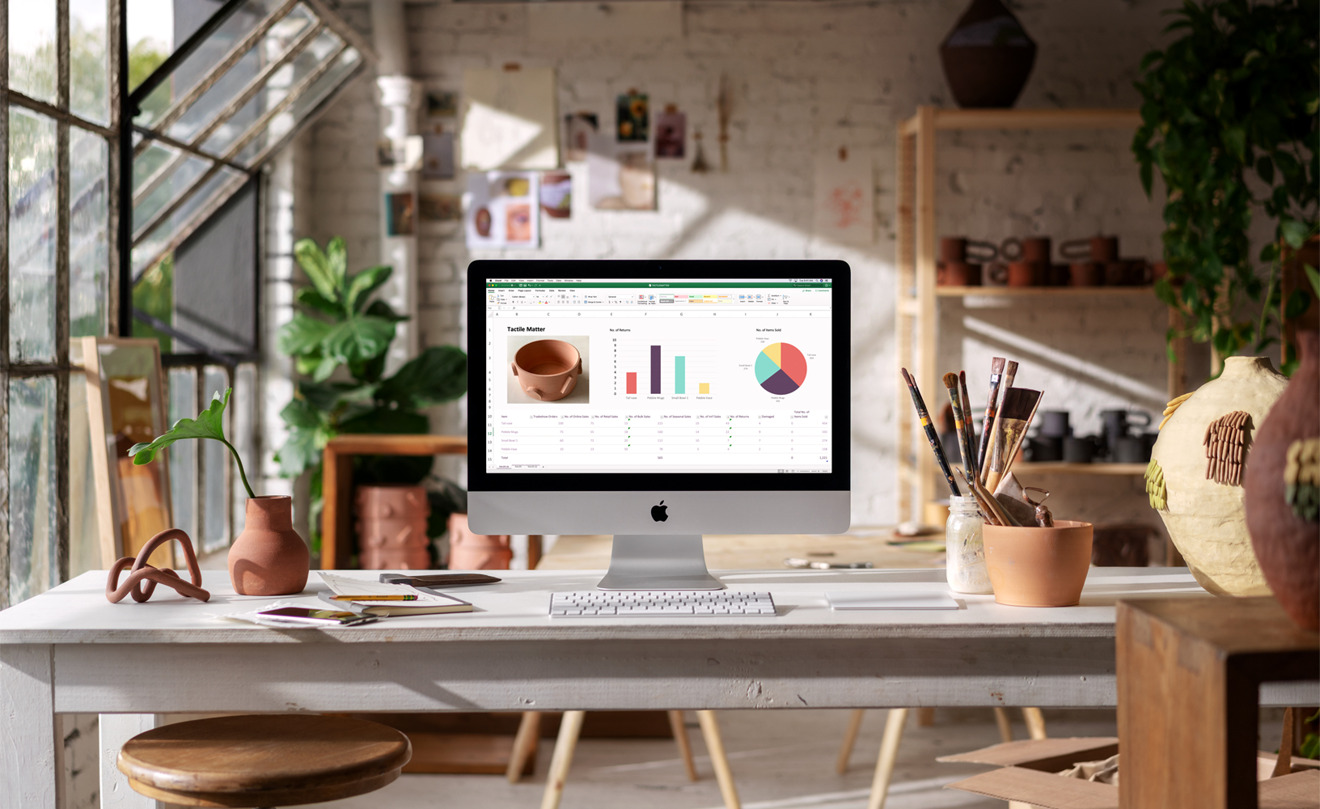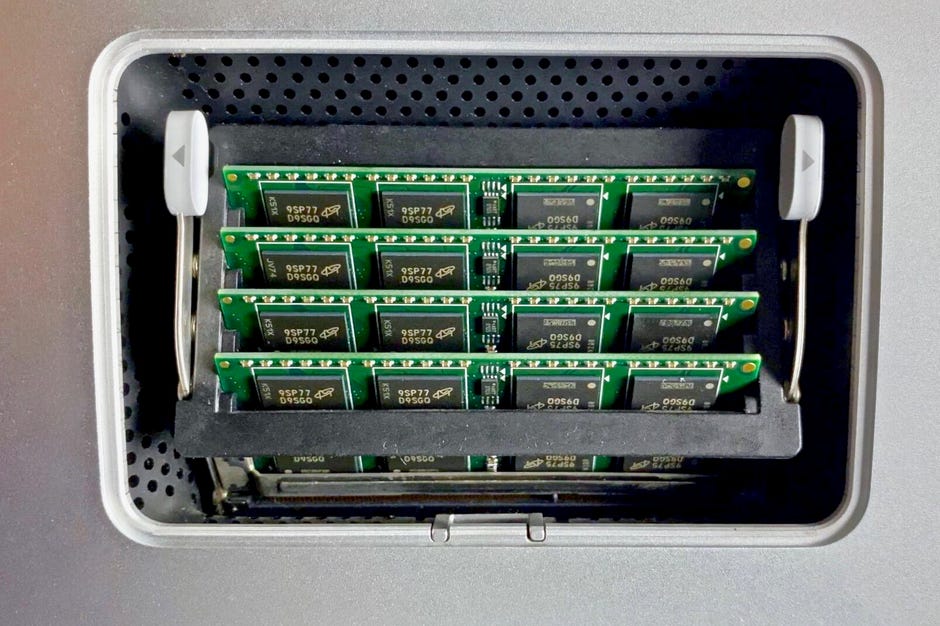“No matter what I do, my Mac is still slow”, an average tech-consultant hears this phrase multiple times a day. Give a person even the most powerful computer, and pretty soon it will be cluttered with apps, extensions, and things that are too much for it to handle. To reverse it, one has to go back and сlean up the mess, removing memory agents one by one. Prepare for a fight — every byte of memory is at stake. So let’s put your Mac on a diet and get it more free RAM to breathe freely.
- How To Clear Memory On Macbook Air
- How To Clear Memory On Mac Pro
- Clear Memory On Macbook
- Imac How To Clear Cache
First, remove desktop clutter. Get a combination of Setapp apps that clear away unneeded desktop files.
Download Declutter Free“Your system has run out of application memory”
When you're in the Library folder Other files are deleted the same way as any normal file. Again, we warn you to be careful! You could delete files by right clicking on them and choosing Remove to. You can clear memory by ejecting disk images from applications or other files you have downloaded. This is more for Macs than it is Windows. When you have a removable disk in your computer, even if you aren’t using it, it takes up RAM and can slow your computer down. This also goes for any external hard drives you have plugged in. To clear RAM on Mac, you will have to keep Chrome's task manager in check. It can be used to force quit the heavy processes in the browser which uses the RAM. It will directly reduce CPU usage. Just open the Chrome settings, click on More Tools and you will find the Task Manager there. MacFly Pro does the following: it removes inactive or old apps, as well as related files, cleans inactive memory, clears the cache and duplicates, gets rid of language and log files, and scans the overall condition to warn system of violations or threats.
How do you know your Mac is low on memory? Floating “rainbow wheels” aside, you may notice your Mac now takes ages to load. You’ll also see many browser applications crashing. You’ll be also thrown warning messages as “Your system has run out of application memory”. To help it, you should first visit the Activity monitor to see memory usage on Mac.
How to check RAM usage on Mac
Go to Applications and type in Activity Monitor in the search bar. This invokes a good old Activity Monitor that should tell how much free memory you’ve got left.
A shortcut to open Activity Monitor:
Press F4 and start typing Activity Monitor in the search bar.
I’ve attached a screenshot from my Mac and as you can see my memory usage almost reached full capacity. Here’s what it all means:
App memory: taken by apps and processes
Wired memory: reserved by apps, can’t be freed up
Compressed: inactive, can be used by other apps
Swap used: memory used by macOS
Cached files: memory you can really use
Notice the colored graph under Memory Pressure. If your graph is all but red and yellow, your Mac is really gasping for fresh memory. It seems counter-intuitive, but “available memory” your Activity Monitor is not that important after all. In fact, it’s a system intended behavior to use all memory resources when available. On the contrary, the Memory Pressure graph is much more telling, so grow a habit to check this graph in the Activity Monitor every now and then.
How to check CPU usage on Mac

Open the CPU tab in Activity Monitor to keep in check CPU-heavy processes. Normally an app would be using 0-4% of CPU. If it takes abnormally more than that, go inside that particular item in the list and press the Quit button.
How to free up memory on Mac
Tip # 1. Remove Login Items to lower Mac memory usage
Login items are programs that load automatically upon Mac startup. Some of them covertly add themselves to the list and this is no good. If you’re looking to free up RAM, they are the first candidates for deletion. Don’t worry, you’re not deleting the app itself, you just stop it from auto-launching every time.
So, to remove Login Items and at the same time reduce your memory usage of your Mac, you need to:
- Open System Preferences and select Users & Groups.
- Click your nickname on the left.
- Select the Login Items tab.
- Check programs you don’t want to load as your Mac starts.
- Press the “–” sign below.
Now, you won’t see these apps pop up the moment you turn on your Mac. Although this method doesn’t require some superpowers of yours, some special Mac optimization and memory cleaner tools may do the job faster and ensure the smooth performance of your Mac. CleanMyMac X is an excellent example of such software. Here’s how to disable Login Items with CleanMyMac X:
- Download it for free and go to the Optimization tab.
- Check Login Items to see the list of apps that get opened when you start your Mac.
- Click Remove.
As you’ve already come to the Optimization module of CleanMyMac, you can also fix hung apps and heavy memory consumers there. In this way, you’ll free up the solid amount of RAM on Mac — 100% free of charge.
Tip # 2. Free up disk space if Mac is low on memory

The available space on your Mac’s drive translates into virtual memory. This comes to save you when you’ve run out of physical RAM. So now your computer relies on your hard drive space to keep your apps going.
How To Clear Memory On Macbook Air
The classic geek rule of thumb holds it that you should keep at least 20% of disk space on your startup drive. Not only this potentially reduces your future spending on iCloud storage but it also keeps your Mac speedier.
What to delete to free up space:
- Large unused files, like movies
- Old downloads
- Rarely used applications
- System junk
But here’s a simpler solution to save your time — clean up your drive with CleanMyMac X— the app I’ve mentioned above. Many users recommend it as an excellent way to free up more space because it searches for large & old files, useless system files, Photo junk, mail attachments and shows everything you can safely delete. Interestingly, it finds about 74 GB of junk on an average computer.
Extra trick: How to free up RAM on Mac with CleanMyMac X
If you have downloaded CleanMyMac, you may also take advantage of its amazing feature — the ability to free up RAM in a few seconds. Try this next time you see “Your system has run out of application memory” message.
- Go to the Maintenance tab on the left.
- Click Free Up RAM.
- Click Run.
As simple as that!
And you can do it even if you download a free version of the app.
Tip # 3. Clean up your Desktop
This tip always comes at the bottom of instructions and unfairly so as it is quite effective. Without even looking at your Desktop I would assume it’s cluttered with mountains of icons. Thing is, your macOS was designed in a way that it treats every Desktop icon as a little active window. The more icons, the heavier memory usage on Mac. So in order to release available memory resources, it’s recommended to keep your Desktop clean.
You don’t have to do it all by yourself. With apps like Declutter and Spotless, every desktop cleaning session will be scheduled in advance and executed automatically. Your only job is to define the rules on how your files should be organized.
Tip #4. Clear cache files
Another way to free up RAM on Mac is to clear it of cache files. Of course, it won’t save you gigabytes of space, but deleting cache regularly, you can help your Mac run faster and avoid system issues.
So, to remove cache files on your Mac, you need to:
- Open Finder.
- From the Go menu, select Go to Folder.
- Type ~/Library/Caches in the field and press Go.
- In the window that appears, you will see all your cache files.
- Press Command+A to select all files or delete files one by one.
- Enter your user name and password to confirm.
If you find some files still in the folder after you emptied it, maybe you have some windows open on your Mac. Just like that, you can save up some space on your Mac. Don’t forget to empty the bin afterward.
Tip # 5. Tune up Chrome’s Task Manager
Although Google Chrome is not the one to blame for massive memory usage, it can indeed affect your Mac's performance. If you use Chrome as your primary browser, you probably have many windows opened there. Chrome runs a lot of processes to ensure a fast browsing experience for you. So, it uses your RAM for storing your tabs, plugins, and extensions. Look at how many entries Google Chrome has in Activity Monitor:
The question then arises, 'Why does Chrome use so much RAM?' The thing is that each process is responsible for a separate plugin or extension of your browser. For example, when a tab unexpectedly falls, you need to refresh it to continue your work there. If one process were responsible for all tabs and extensions, you would need to restart the whole browser instead. Can you imagine how many times would you do that? That’s the proper answer to why Chrome uses so much RAM.
I’ve been using Chrome for some years only to discover (recently) that Chrome had a task manager of its own. You can use it to force quit memory-heavy processes in the browser. It’s a handy tool because it lets you see how a page weighs on CPU usage on a Mac.
- Go to Chrome settings (dotted icon in the top right corner)
- Click More tools -> Task Manager

To free up even more RAM, close the GPU process. The GPU Process, though helpful in theory to accelerate pages, eats up a considerable amount of memory. Click to end it to free up RAM on your Mac.
Tip # 6. Manage RAM usage with CleanMyMac X menu
CleanMyMac X has another useful and convenient feature for managing your Mac’s performance and memory usage. As you install CleanMyMac X and start it for the first time, it’s icon will appear in your menu bar. Click the icon to open the CleanMyMac X menu. Here you can find updates on the current condition of your Mac and perform quick tweaks to increase your Mac's speed. Whenever you feel like your Mac underperforms, open the CleanMyMac X menu to check how much RAM is available and free it up as well.
Tip # 7. Close Finder windows
Okay, suppose you’re still asking yourself, how do I clear RAM on my MacBook Pro/MacBook Air. The next trick is as magical (you’ll see for yourself) as it is time-saving. It’s no secret that each window in the Finder eats up RAM. But how many open windows are there? Some of them are collapsed or stacked in some blind spot on your screen. This Finder command merges all your windows into one. See how to do it:
Click on Finder > Window > Merge All Windows
Now you can manage Finder windows more effectively and free up memory on MacBook.
What else you can do to minimize memory usage on Mac
I’ve saved the easiest tips for the end, as long as these ones are self-explanatory.
- Replace AdBlock (very memory-demanding) with a lighter extension
- Keep fewer opened tabs in the browser
- Restart your Mac more often to free up RAM
- Close all hung-up print queues
How To Clear Memory On Mac Pro
That was my take on how to make your Mac a bit speedier to use. If you’re looking for more guidance, check simple ways to speed up your Mac.
Frequently Asked Questions
How to check application memory on Mac?
To check RAM usage on your Mac, go to Activity Monitor (Applications > Utilities). In the Memory tab, you will see all the active processes that are using your Mac’s RAM. At the end of the window, there is a Memory Used graph, which indicates how much application memory is used.
How to find out whether your Mac needs more RAM?
Your Mac may be using almost all its RAM, but you don’t need more if it’s using it efficiently. Open Activity Monitor and go to the Memory tab. The Memory Pressure graph shows the current condition of your RAM: green color means your Mac’s using RAM effectively, while yellow is a sign that some application or process is using too much of application memory. The red memory pressure signals that your Mac needs more RAM.
How to quickly free up RAM on your MacBook?
To free up RAM on your Mac, firstly, you should find out what app uses so much of your memory. The memory-heavy programs are listed in Activity Monitor, Memory tab. If there is an app you aren’t using at the moment, click it and press the “X” sign to quit it. This will, in turn, free some of the application memory.
There comes a time in every device where you have to delete unwanted files and clean up more memory for storing important data. You will face this issue on Mac as well. If your Mac is low on memory, that could be a big problem. Don’t worry because we will introduce some useful tips that will help you to clean up memory on Mac. Just read on this article.
Find Out The Signs of Low Memory on Mac
Are you having memory issues on Mac? Every Mac device comes with a memory limit, and when you have used the majority of the space, then it means you have to delete some files to reclaim memory. Here is the question: what are the signs of low memory on Mac? Below are the problems that you may experience on a Mac that is short of memory.
1. Receives 'Your disk is almost full' alerts
Many Mac users will get “Your startup disk almost full” error message when the device is low on memory. If you ignore the message without doing anything, it will usually come back again. So you have to fix the issue as soon as possible.
2. Beach ball keeps spinning
When an app on the Mac gets more tasks than it can process, the window server will automatically show a spinning ball for you. When the ball keeps spinning, that means the app cannot handle all the tasks at that time and start to crash. This is also one of the signs of having not enough memory.
3. Takes long time to load everything
If your Mac takes a long time to load webpages on browsers or you can’t just navigate back to the former page, that means the device is getting slow because of low memory. To fix this issue, releasing more available space on Mac is the first thing to do.
You have to follow some steps to run your Mac efficiently. To make this happen, read the article carefully so that you can get better guidance.
Check How Much Memory Your Mac is Using
Do you want to check your Mac memory first? You can use Activity Monitor to check your space consumed by the files. Just use this useful tool to verify if your Mac is running out of space for you.
In order to open Activity Monitor press F4 and enter the name of the tool in the search bar. It will provide you with some of the options like App memory, Wired memory, compressed, and Swap used. Then you will clearly see what files are filling up your memory. Pay attention to the colored graph under Memory Pressure section. If the graph is most of red and yellow, that means your Mac is really short fresh memory. You need to start doing something helpful to get more memory for your Mac. Some proven-tips are listed below, just keep on reading.
8 Proven-Tips to Clean Up Memory on Mac You Need to Know
If your memory on Mac is full, that will cause many other problems, like frozen or slowdown. This can be the worst thing for those Mac users. In order to make your Mac back to life again, you can follow 8 tips below to get more memory.
Tip 1 The Most Efficient Way: Use Mac Cleaner Software to Clean Up Junk Files
How to clear memory on Mac in the most efficient way? You can use Mac cleaner software that will help you to clear all the junks that are consuming more space first. We recommend Umate Mac Cleaner as your best choice. It’s a powerful cleaning app that comes with ultimate features.

How Do Umate Mac Cleaner Function to Clean Mac Memroy
- Completely and automatically scan junk files with the help of Quick Clean and Deep Clean mode.
- Selectively delete the scanned files and keep those important ones.
- Allows you to remove those junk files with just 1 click.
- Easily uninstall apps and remove different types of extensions to free up more extra memory.
Benefits of using Umate Mac Cleaner
- Efficient: Clean up all unneed files, apps, extensions in a few seconds with just one click.
- Supportive: Supported to clean up more than 40 types of junk files and works well with Macbook/iMac running macOS 10.14-10.9.
- Secure: Clean up files safely without disturbing your important files.
- Easy-to-use: The user interface is straightforward and very simple to use. No professional knowledge required.
- Cost-effective: Minimum for 29.95/1 year and also available for 5 Mac devices.
Steps to use Umate Mac Cleaner
- Download the app and launch it.
- Select the desired feature that you want to use. (Either “Clean Up Junk” or “Manage Apps & Extensions” can be helpful on reclaiming more space). And then hit Scan button to scan your Mac according to the selected feature.
- Once the scanning is done, look at the results to decide which items should stay and click Clean to free up space.
Tip 2 Clean Up Your Desktop
If you really want to clear memory on your Mac, you might need to clean up your desktop first by deleting those unneeded files. This job can be simple, just drag those files you don’t need to the Trash. But be noted: if your desktop is particularly cluttered this may become a time-consuming task.
Tip 3 Uninstall Apps You Never Use
Uninstalling apps that are no use to the user is a significant step. You can do it with the help of any software or manually as well. This way is also useful to clean up Mac memory. Below are the steps that you need to follow.
- Open the Application folder.
- Drag the app that you want to delete.
- After that, empty the trash.
Tip 4 Remove Extensions on The Browsers
The extensions that you rarely needed are also taking up some space on the Mac. So, why not get those space back by deleting the unwanted browser extensions? Just follow the simple steps like: launch the browser on your Mac and then go to Preferences tab to remove those extensions on the Extensions scation.
Tip 5 Clean Up Downloads
Cleaning up your Downloads folder plays a important role in releasing more space on Mac. So make sure to check your Downloads folder carefully. Below are the steps that you can follow.
- Open Finder.
- Go to Downloads folder and check the files.
- You can delete the files you want to delete and release the space they are using.
Tip 6 Clean Up Trash Bin
Another way is clean up your Trash Bin on Mac. When you deleted a file on Mac, that is not really means it has permanently deleted. It is still sitting on your Trash Bin. So, just delete those items you don't need anymore on Trash Bin. That will save some space for your device.
Tip 7 Delete Cache Files
Most of the space is occupied by cache files. You can delete the cache by clicking finder, adding the command ~/Library/Caches/ to the folder you want to delete.
Umate Mac Cleaner also helps a lot to clean all the cache files as a great Mac memory cleaner. It can get rid of system cache, app cache and browser cache with one click.
Tip 8 Get a Total Cleanup for Your Mac
A full Mac cleanup is essential because in this way you can delete those files that are not important for you but are occupying your space. This will be a useful way to free up memory on Macbook. Here are some steps that you can use to delete each file manually.
Delete Log Files
- Open Finder and find Go To Folder.
- Type “~/Library/logs” on the search bar and press enter to open the logs folder.
- Select those logs files you want to delete and press command + backspace.
- At last,don't forget to delete them from the Trash too.
Delete Mail Attachments
- Delete Mail attachments
- Open the mailbox app.
- Then select the mail you want to delete.
- You can click on the Message window and select Remove attachments.
Delete Old iOS And iTunes Backups
- Open your iTunes app.
- Now select the iTunes menu and choose Preferences option.
- Select the device.
- Choose the backup you want to delete.

Delete Duplicate Photos And Files
Clear Memory On Macbook
- Go to New Smart Folder.
- Click the plus button on the top right corner, and then select search parameters to locate the target files. Then you can find duplicate photos or files on this screen and get rid of them by right-click to 'Move to Trash'.
Delete Languages Files
- Open the Resource folder.
- Find folders by typing the 'Iproj” on search bar.
- Now delete the folder you don’t want to use.
Delete Large Files
- Open Finder.
- Locate large files on Mac with the search bar by choosing the File Size and Greater Than choices.
- All of the mateched files will be shown in the next window. Then you can then easily delete them.
Try to Avoid Filling up Your Mac’s Memory
If your Mac is running out of space, then the best way to stop it is to clean your files manually. To do that, make sure you delete your files daily or at least weekly.
Imac How To Clear Cache
You can also use all-in-one software like Umate Mac Cleaner, which helps to remove all the junk files without making changes to your system. It also helps to increase your Mac’s running speed efficiently. All in all, this is a very helpful software on how to free up memory on Mac. Many Mac users are using it and believe me, it really works and is more amazing than you think.
